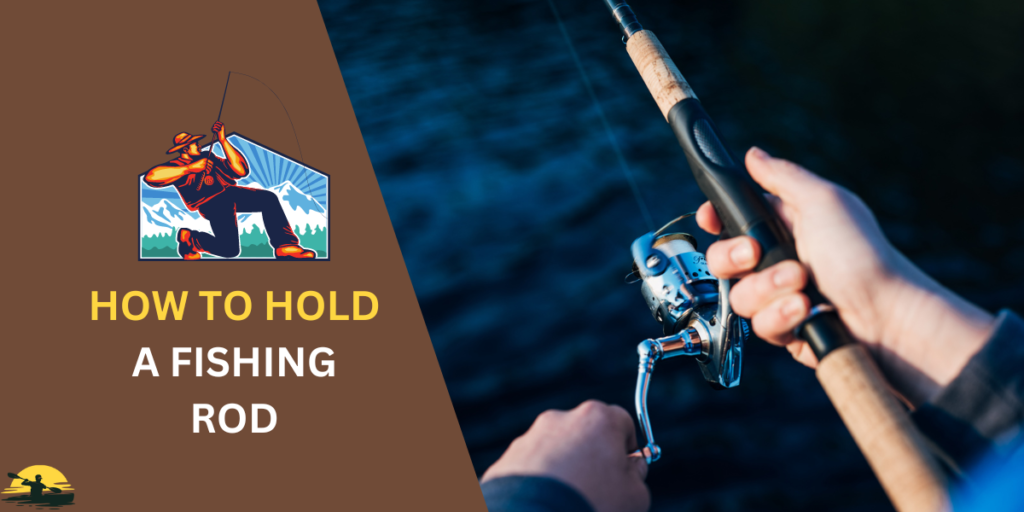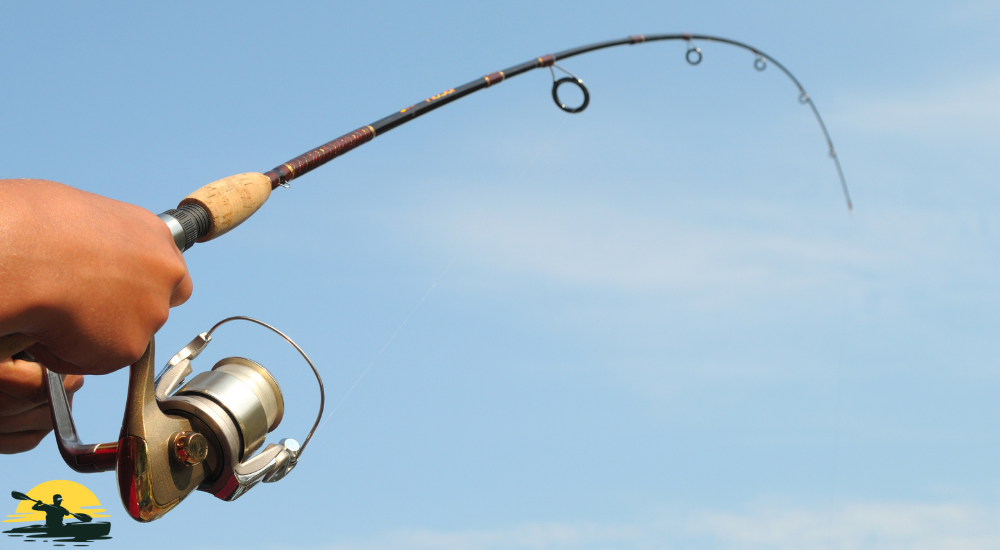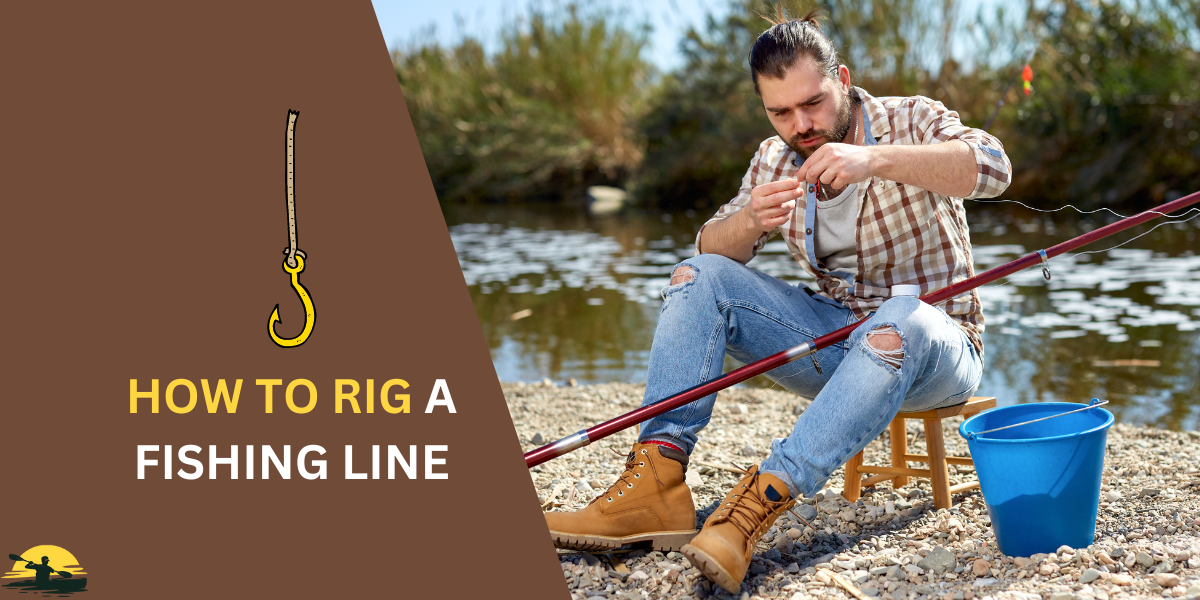
Picture this: you’re lakeside, the sun’s out, and you’re ready to fish. But do you know the secret to catching the big ones? It’s all in how you hold your rod!
Whether you’re a spinning rod enthusiast or prefer another type, your grip makes a huge difference. It affects your casting, line control, and how you handle those trophy fish. Please don’t worry if this sounds tricky to you.
In this easy guide, we’ll break down the right grip, casting techniques, and tips for battling those big catches. Let’s turn you into a rod-holding pro!
How to Hold a Fishing Rod in 2024
- Know Your Rod: Get familiar with the different parts (reel seat, rod handle, reel handle, guides).
- Dominant Hand Rules: Your dominant hand (the one you write with) goes above the reel seat.
- Non-Dominant Hand Helps: This hand goes below the reel seat for support.
- Grip It Your Way: Try different grips (pencil, palm, fingertip) to see what feels best.
- Cast Like a Pro: Use your whole body, practice makes perfect, and watch out for backlash!
- Find Your Stance: Feet shoulder-width apart, knees slightly bent, and elbows close to your body.
- Level Up: Learn extra tips like feeling the line, adjusting your grip, jigging techniques, and more.
- Have Fun! Remember, fishing is about enjoying the outdoors and the thrill of the catch.
Different Types of Fishing Rods
Before we dive into how to hold your rod, I’d like to get familiar with the different parts. This will help you understand why your grip matters so much.

- Reel Seat: This is where you attach your spinning reel. It’s usually found on the rod handle, above where your hands will be.
- Rod Handle: This is the part you’ll be holding. It can be made of cork, foam, or other materials.
- Reel Handle: The part of the spinning reel you crank to bring in your line (and hopefully a fish!).
- Guides: These little rings along the fishing rod help guide your fishing line.
Now, you might be wondering, “Do all fishing rods look the same?” Nope! There are different types, like spinning rods, casting rods, and fly rods. We’ll focus mostly on spinning rods because they’re the most popular and beginner-friendly.
But no matter which rod you choose, the basic idea of how to hold it is the same. Would you be ready to learn? Let’s move on to the next step!
Finding Your Dominant Hand
Now that we’ve gotten to know the parts of your fishing rod, including the reel seat, rod handle, and reel handle, it’s time to figure out which hand is in charge. This is important because it determines how you’ll hold the rod and which way you’ll reel in that big fish!

- Dominant Hand: This is the hand you write with. It’s usually your stronger hand and will do most of the work when casting and reeling. Most people will use their right hand for this, but some folks are lefties. There are even specially designed left-handed reels for those who prefer them.
- Non-Dominant Hand: This hand helps support the rod and provides a firm grip, giving you more power when you need it.
If you’re right-handed, you’ll typically hold the fishing pole with your right hand and use your left hand to crank the reel handle. If you’re left-handed, you’ll do the opposite.
But here’s the cool thing: fishing isn’t set in stone! Some people actually prefer to hold the rod with their non-dominant hand and reel with their dominant hand. It’s all about personal preference and what feels comfortable for you.
Now, let’s get a grip on this rod!
Holding a Fishing Rod While Fighting a Fish
Alright, you’ve figured out your dominant hand – awesome! Now, let’s get that fishing rod in your hands and make it feel like an extension of your arm. Here’s how to hold it properly:

- Dominant Hand Placement: Remember that reel seat we talked about? Your dominant hand goes above it. Place your fingers around the rod handle, with your thumb resting on top of the reel stem (that little piece of metal where the line comes out). This gives you better control of the rod and allows you to reach the reel handle easily.
- Non-Dominant Hand Placement: This hand’s job is to provide support. It goes below the reel seat, on the opposite side of the rod, from your dominant hand. Your index finger should be extended along the rod blank (that’s the main part of the rod). This gives you more leverage and helps you cast farther and fight bigger fish.
- Gripping Styles: You can experiment with different grip styles to see what feels best for you:
- Pencil Grip: This is a light grip, kind of like how you hold a pencil. It’s great for casting lighter lures and feeling subtle bites.
- Palm Grip: This is a stronger grip where you hold the rod handle in the palm of your hand. It gives you more power to cast heavier lures and fight those big fish.
- Fingertip Grip: This is similar to the pencil grip, but your fingers are slightly more extended. It gives you maximum sensitivity so that you can feel even the tiniest nibble.
Here’s a bonus tip: Keep your grip firm but not too tight. You want to be able to feel what’s happening with your line and lure, but you also don’t want to get hand cramps!
Casting Techniques
Alright, you’ve got the perfect grip on your fishing rod – now let’s get that line out into the water! Casting might seem a little tricky at first, but with some practice, you’ll be launching your bait like a pro.

The Basic Cast
Here’s a simple way to cast, whether you’re using spinning reels or right-handed reels:
- Get Ready: Hold the rod in front of you, tip pointing up. With your other hand, open the bail (that little wire arm on the spinning reel) so the line can come out.
- Swing It Back: Bring the rod tip back over your dominant shoulder like you’re about to throw a baseball.
- Whip It Forward: Now, quickly swing the rod forward, aiming for a spot in the water where you think the fish might be hanging out. As the rod tip gets close to pointing at your target, use your index finger to release the line from the spool.
- Follow Through: Keep the rod tip pointing towards where you cast, and let the line fly out.
Tips for Better Casting:
- Use Your Whole Body: Don’t just use your arms to cast. Get your whole body into it – twist your hips and use your legs for more power.
- Practice Makes Perfect: Casting takes practice, so don’t get discouraged if you don’t get it right away. Head to a park or an open field and practice casting until you get the hang of it.
- Watch Out for Backlash: If you’re using a casting reel, be careful not to let the spool spin too fast, or you’ll get a tangled mess called a “backlash.” You can control the spool with your thumb to prevent this.
Hooking a Fish
Now, the exciting part! When a fish takes your bait, you’ll feel a tug or see the rod tip dip. Here’s what to do:
- Set the Hook: Quickly pull back on the rod with your dominant hand to set the hook in the fish’s mouth.
- Reel It In: Keep the rod tip high and start reeling in the line. Let the fish pull against the drag (the tension setting on your reel) and tire itself out.
- Landing Your Catch: When the fish gets close, use a net or lift it out of the water with your rod. If it’s a smaller fish like a trout, you might be able to lift it by the line.
Remember: Don’t try to lift a big fish out of the water using only your rod – you could snap it! Use a net or have a friend help you.
Now that you’ve got the basics of casting and catching down, get out there and start fishing!
Balance and Comfort
Holding your rod right is only half the battle! Your stance – how you position your body – is just as important for comfortable and effective fishing. Here’s how to find your perfect fishing stance:

- Feet Shoulder-Width Apart: Stand with your feet about shoulder-width apart. This gives you a stable base and helps you maintain your balance, especially when you’re reeling in an aggressive fish.
- Knees Slightly Bent: Don’t lock your knees! You can keep them slightly bent to absorb any sudden movements from the fish. This will also help you avoid getting tired too quickly.
- Elbows Close to Your Body: Hold your elbows close to your sides, but not glued to them. This gives you better control of the rod and helps you cast with more accuracy.
Tips for Different Fishing Situations
Your stance might change a little depending on where and how you’re fishing:
- Shore Fishing: If you’re fishing from the shore, try to find a spot where you can stand comfortably. You can even lean against a rock or tree for extra support.
- Boat Fishing: When you’re in a boat, you might need to adjust your stance to stay balanced as the boat moves. Hold on to something sturdy if you need to.
- Fly Fishing: Fly fishing often involves casting from a crouched position. This helps you stay low and avoid spooking the fish.
Common Mistakes to Avoid
- Stiff as a Board: Don’t stand too rigidly. Relax your body and let your movements be fluid.
- Too Much Arm: Don’t rely solely on your arms to cast or reel. Use your whole body to generate power and avoid getting tired.
- The Leaning Tower of Pisa: Don’t lean too far forward or backward. You’ll lose your balance and might even fall in!
Find Your Groove
Remember, the best fishing stance is the one that feels comfortable and natural for you.
You can experiment with different positions until you find what works. Once you’ve found your groove, you’ll be able to fish for hours without getting tired, giving you more time to catch that trophy fish!
Beyond the Basics
Now that you’ve mastered the basics let’s spice things up with some extra tips and tricks to make you an even better angler:

- The “Feel” of the Line: Pay close attention to the feel of your line. If it suddenly goes slack, that could mean a fish is taking your bait! On the other hand, if you feel a sudden tug or vibration, that’s probably a bite!
- Don’t Be a Robot: Your grip and stance don’t have to stay the same all the time. Relax, adjust your grip if your hands get tired, and shift your position if you need to.
- The Art of Jigging: If you’re jigging (a technique where you move your lure up and down), use your wrist and forearm to make short, sharp movements. This will make your lure dance in the water and attract fish.
- The Power of the “Set”: When you feel a bite, don’t just reel in the line. Give the rod a quick, sharp jerk upwards to set the hook in the fish’s mouth.
- Stay Alert: Fishing requires patience, but it also requires focus. Keep your eyes on the rod tip and your line. You never know when a fish will decide to bite!
- Protect Your Gear: Take good care of your fishing rod. Rinse it off with fresh water after each use and store it in a safe place to avoid damage.
- Learn from the Pros: If you want to improve your fishing skills, watch videos, read articles, or even take a class from a professional angler. There’s always more to learn!
Remember, fishing is all about having fun and enjoying the great outdoors. Stay focused on being perfect. Experiment, try new things, and, most importantly, have a blast out on the water!
Conclusion
Congratulations, you’ve graduated from Rod Holding 101!
You’ve learned how to hold a fishing rod like a pro, from finding your grip to mastering your stance. You’ve even picked up a few extra tips and tricks along the way.

Now, it’s time to put your newfound knowledge to the test. Get out there, cast your line, and reel in some memories! Remember, fishing is all about having fun and enjoying the peace of nature.
So, grab your gear, find a good fishing hole, and let the adventure begin!
Don’t worry if you don’t catch a fish on your first try – that’s part of the fun! Just keep practicing and experimenting with different techniques, and you’ll be reeling in the big ones in no time.
And hey, even if the fish aren’t biting, you can still enjoy the sunshine, the fresh air, and the feeling of being out on the water. So go ahead and cast your worries away – happy fishing!
Frequently Asked Questions
Can I use both hands to hold my fishing rod?
Absolutely! While the basic grip involves one hand above the reel and one below, you can use both hands for casting, reeling, or fighting a fish. Experiment to find what gives you the most control and comfort.
Should my arms be straight or bent when holding a fishing rod?
Your elbows should be slightly bent, not locked straight. This gives you more flexibility and helps you absorb the fish’s movements without putting too much strain on your arms. Catch fish is a challenging task to do, but it’s also a fun thing to do.
How do I know if I’m holding the rod at the right angle?
There’s no single “right” angle, but generally, a 45-degree angle between your rod and the water is a good starting point. You can adjust this angle depending on the type of fishing you’re doing and the conditions.
Do I need to grip the rod tightly all the time?
No, a firm grip is important, but avoid squeezing the life out of the rod! A relaxed grip allows you to feel the line and the fish’s movements better. You can always tighten your grip when you need to reel in a big catch.
What’s the best way to hold a fly rod?
Holding a fly rod is a bit different. You’ll typically use your dominant hand to grip the rod above the reel and your non-dominant hand to control the line. There are various casting techniques for fly fishing, so it’s worth learning from an experienced angler or instructor.










